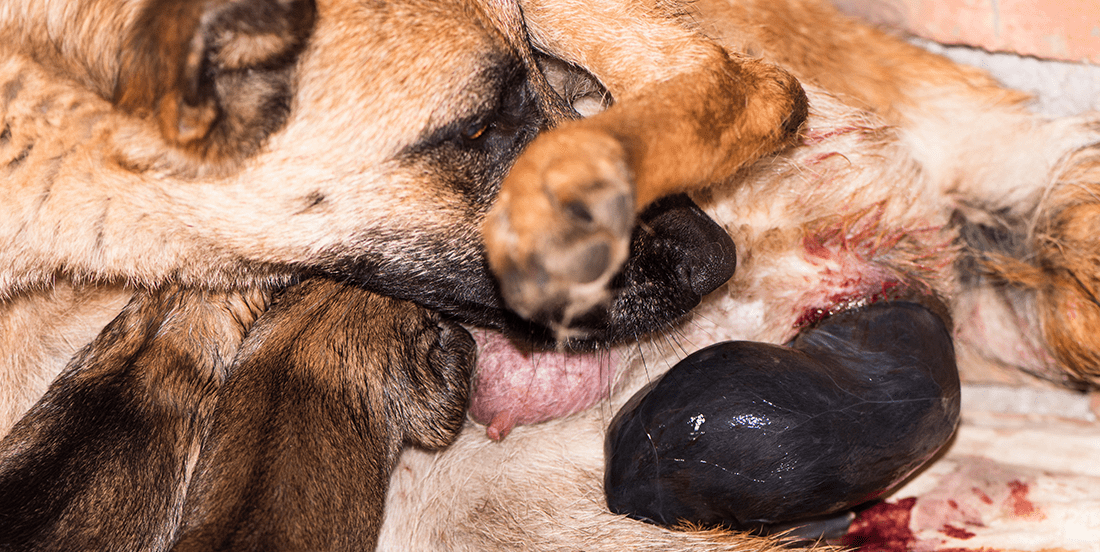
Birth in Dogs: A Comprehensive Guide to Canine Pregnancy and Delivery
Introduction
The birth of a litter of puppies is a momentous occasion for any dog owner. Understanding the stages of pregnancy, labor, and delivery can help ensure a smooth and successful birthing process. This comprehensive guide will provide an in-depth look at canine pregnancy and delivery, from conception to the arrival of the new pups.
Stages of Pregnancy
1. Proestrus
Proestrus marks the onset of the estrus cycle, the period when the female dog is receptive to mating. This stage typically lasts for 9-10 days and is characterized by vaginal bleeding and swelling.
2. Estrus
Estrus, also known as "heat," is the fertile phase of the estrus cycle. During this stage, the female dog will be receptive to mating and will produce an ovulation-inducing hormone. Estrus typically lasts for 5-9 days.
3. Diestrus
Diestrus occurs after ovulation and lasts for approximately 60-70 days. During this stage, the female dog’s body prepares for pregnancy. If the female has not become pregnant, she will enter anestrus, a period of sexual inactivity.
4. Pregnancy
Pregnancy in dogs typically lasts for 63-67 days, with an average of 63 days. The gestation period can vary slightly depending on the breed and the number of puppies.
Signs of Pregnancy
- Enlarged abdomen: The female dog’s abdomen will gradually enlarge as the puppies grow.
- Weight gain: Pregnant dogs will typically gain weight, especially in the later stages of pregnancy.
- Increased appetite: Pregnant dogs may have an increased appetite as their nutritional needs increase.
- Behavioral changes: Pregnant dogs may become more affectionate and clingy. They may also experience nesting behavior, such as gathering materials to create a comfortable birthing area.
- Vaginal discharge: A clear or slightly bloody vaginal discharge may be present during pregnancy.
Labor and Delivery
1. Pre-Labor
Pre-labor typically begins 12-24 hours before the onset of active labor. Signs of pre-labor include:
- Restlessness: The female dog may become restless and pace around.
- Panting: Increased panting is common during pre-labor.
- Vomiting: Some dogs may experience vomiting during pre-labor.
- Temperature drop: The female dog’s body temperature may drop by 1-2 degrees Fahrenheit before labor begins.
2. Active Labor
Active labor begins with the onset of uterine contractions. These contractions will gradually increase in intensity and frequency. The female dog may strain and push during contractions.
3. Delivery of Puppies
The puppies are typically delivered head first, with the forelegs extended forward. The female dog may lick the puppies to stimulate breathing and remove the amniotic sac.
4. Placental Delivery
After each puppy is delivered, the placenta will follow. The female dog may eat the placentas, which is a normal behavior.
5. Postpartum
After the delivery of all the puppies, the female dog will enter the postpartum period. This period typically lasts for 4-6 weeks and is characterized by:
- Vaginal discharge: A bloody or greenish-brown vaginal discharge may be present for several days after delivery.
- Lactation: The female dog will produce milk to feed her puppies.
- Maternal instincts: The female dog will exhibit strong maternal instincts and will protect and care for her puppies.
Complications
While most canine pregnancies and deliveries are straightforward, complications can occur. These include:
- Dystocia: Difficulty giving birth, which may require veterinary intervention.
- Uterine inertia: A condition where the uterus does not contract properly, leading to a prolonged labor.
- Eclampsia: A condition characterized by low calcium levels, which can cause seizures and other complications.
- Mastitis: An infection of the mammary glands, which can affect the female dog’s ability to nurse her puppies.
Veterinary Care
Regular veterinary checkups are essential throughout pregnancy. The veterinarian can monitor the female dog’s health, confirm pregnancy, and provide guidance on nutrition and care. During labor, it is important to contact the veterinarian if there are any complications or if the female dog is struggling to give birth.
Conclusion
Understanding the stages of canine pregnancy and delivery can help dog owners provide optimal care for their pregnant pets. By recognizing the signs of pregnancy, monitoring labor, and seeking veterinary assistance when necessary, dog owners can ensure a safe and successful birthing experience for both the mother and her puppies.